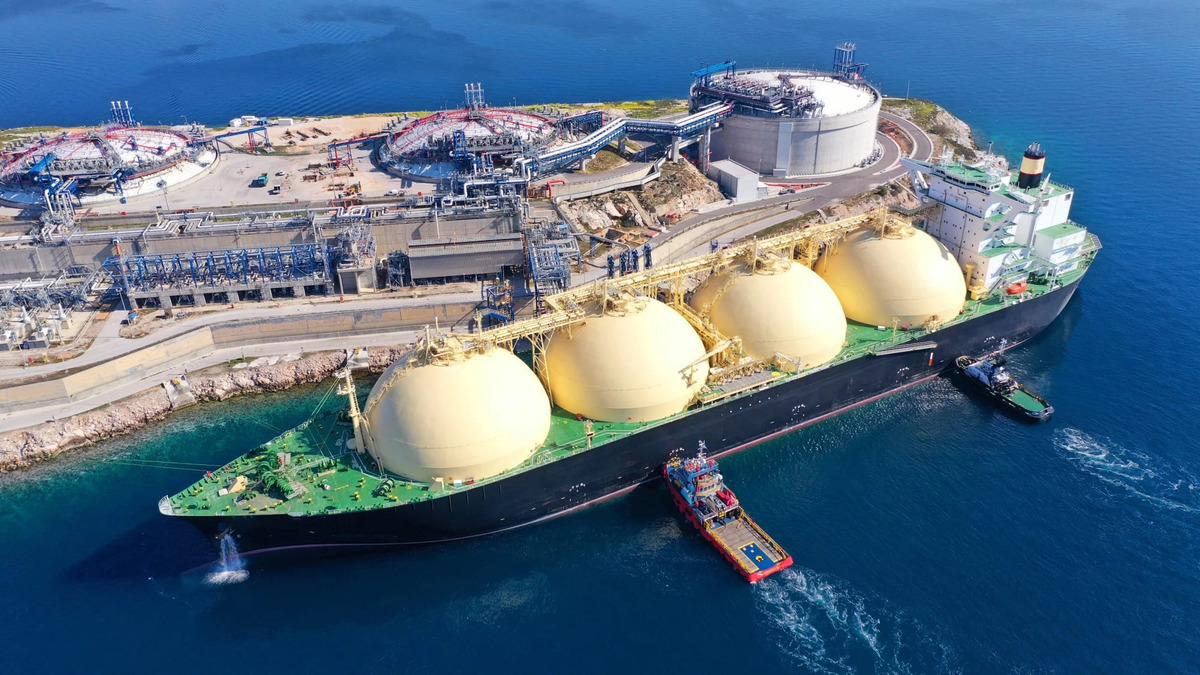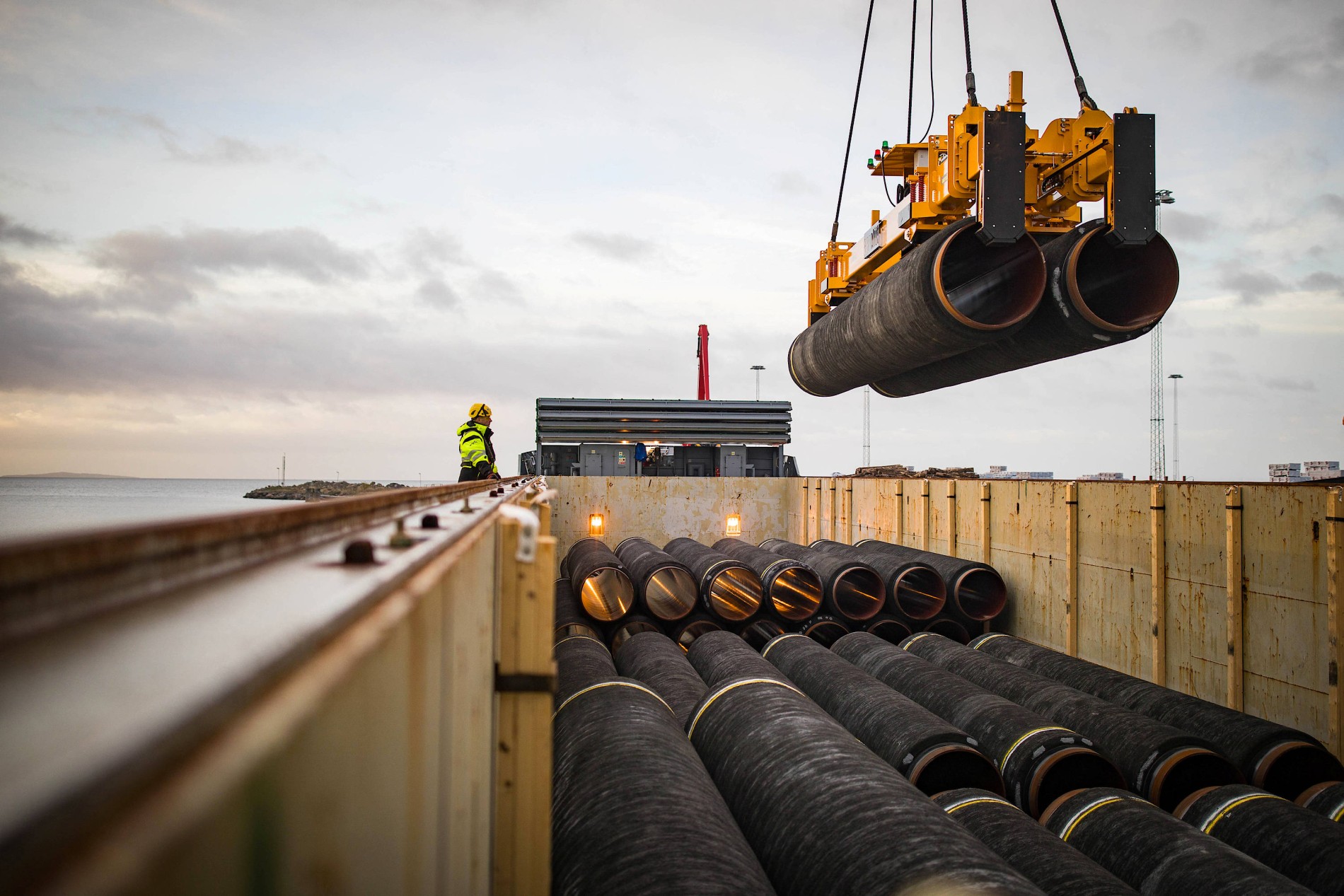Published 29 August 2023
The Ukraine war has set in motion an ongoing energy crisis that has profound but very different impacts across APEC. Energy and economic security have surged to the center of trade strategies as governments scramble to secure reliable supplies and replacements. But these shocks have also provided an impetus for the region's developing economies to play a greater role in global trade and supply chains for clean energy.
The energy industry and energy trade in the Asia-Pacific Economic Cooperation (APEC) region have faced significant challenges in recent years as a result of global energy supply and price shocks reverberating from the Ukraine-Russia war. As Europe’s access to Russian pipeline natural gas was progressively reduced beginning in late 2021 and accelerating throughout 2022, the scramble for substitute supplies of liquefied natural gas (LNG) in an already tightening global market sent prices up sixfold, rippling through the trade of the major LNG importers in APEC. Oil prices spiked due to fears over a potential loss of Russian oil exports, at one point reaching over US$120 per barrel—a major shock to Asia’s heavily import-dependent oil markets. Coal prices jumped fourfold as Europe scrambled to find substitute fuels for power generation, driving Asian-traded coal prices equally upward. The overall rise in imported fuel costs was passed through electricity markets, leading to dramatic price increases in many APEC members.
These energy supply and price shocks had two profound but very different impacts on energy policies and trade strategies across the APEC region. Most importantly, energy and economic security surged to the center of energy and trade strategies as governments scrambled to secure reliable supplies and cushion the immediate impact of skyrocketing costs on businesses and consumers. Second, governments and industry worked furiously to find a wider set of sources for crude oil imports, lock in supplies of LNG from a basically sold-out global market, and absorb extravagant imported coal prices. Long-term concerns about carbon emissions and climate change were sidelined in the push to ensure that economies did not immediately face blackouts and fuel shortages. While these circumstances have created numerous short-term challenges, they have also provided an impetus for numerous developing economies in APEC to play a greater role in global trade and supply chains for clean energy.
Responding to energy security challenges
Facing an urgent energy security crisis, countries took notable emergency steps that reversed progress on opening energy markets and transitioning toward a cleaner energy mix, including defaulting to coal and strategically managing—and sometimes hoarding—supplies. China, for example, doubled down on domestic coal production in order to rely less on imports, while Japan and South Korea stepped up their use of coal to meet electricity needs. Indonesia, the world’s largest coal exporter, imposed a one-month ban on coal exports in January 2022 to ensure adequate domestic supplies, wreaking temporary havoc among contract buyers in Japan and South Korea. Australia worked toward gas “reservation” plans to potentially restrict LNG exports in order to ensure adequate domestic natural gas supplies. Many LNG cargoes were diverted from lower-priced long-term contract buyers to extremely high-priced spot sales to other buyers desperate to secure supply, flagrantly violating contract arrangements.
In response to shocks in the LNG market, the United States has been a critical and growing source of LNG for importers in the APEC region, as well as for Europe as it searched for gas supplies to replace lost Russian pipeline supplies. Japan and South Korea have been major investors in US LNG projects and buyers of US LNG. China is now a huge LNG importer and has signed new long-term US LNG contracts as it seeks to diversify its range of suppliers. Australia is an enormous LNG exporter to APEC economies, although its exports are not expected to grow. Meanwhile, legacy exporters Indonesia and Malaysia are likely to see declining LNG exports over time as increasing energy demand at home outstrips domestic production. Canada is poised over the next few years to become an important new LNG supplier to Asia, with a large new West Coast project expected to come online in the next few years. Mexico will also become a new LNG exporter to the APEC region from two West Coast projects under development based on natural gas imported from the prolific Permian Basin in the southwestern United States.
Nevertheless, many APEC members face a precarious and uncomfortable LNG market until 2025–26 when these projects and several enormous new US projects begin production and major new supplies begin to arrive from Qatar. In an indication of how important LNG trade has become to the energy security of the region, Japan recently called for the creation of an LNG emergency strategic stock reserve system that the International Energy Agency would oversee, just as it oversees the existing joint oil strategic reserve system established in the wake of the oil shocks in the 1970s.
The United States’ role in supporting traditional oil security has also been critical, thanks to the rapid rise in US exports enabled by the shale oil revolution. US exports have provided an important new source of crude oil for the APEC region, especially among buyers in Japan, South Korea, and China. According to the US Energy Information Administration, US crude oil exports reached nearly five million barrels per day in mid-2023 and have been instrumental in reducing prices following the immediate shock of Russia’s invasion of Ukraine.
Opportunities for clean energy trade and development
These developments are undeniably alarming setbacks in APEC members’ progress toward a cleaner energy mix. The most negative fallout from the prioritization of energy security is the upswing in coal consumption as governments across the region seek to ensure adequate electricity and heating supplies in the face of uncertain near-term natural gas supplies and the risk of another sudden rise in prices.
However, the energy security crisis has also had an inverse effect of reinforcing the long-term momentum toward a cleaner energy mix. While shoring up traditional fossil fuel supplies to meet the immediate crisis, countries across the APEC region recognize that the transition to renewables and cleaner energy systems gives them an opportunity to escape the energy and economic dilemmas posed by heavy reliance on fossil fuels, especially oil and coal.
In December 2022, Japan announced its new “Green Transformation (GX) Basic Policy,” a ten-year, US$1.1 trillion roadmap for the country’s decarbonization strategy. Under the policy, a new carbon fee and emissions trading system will be launched in 2026. The program will also promote the development of hydrogen, ammonia, and battery storage, as well as carbon capture utilization and storage. Notably, it proposes construction of new nuclear reactors, along with restarting existing nuclear reactors shut down in the wake of the Fukushima disaster. While progress on renewables is more limited due to challenges particular to Japan’s geography and coastal communities, this roadmap nevertheless represents an ambitious strategy to improve energy security by reducing dependence on imported fossil fuels. It will also promote the energy transition across Asia, as Japan seeks a stronger role as a lender and technology exporter, and will strengthen regional cooperation on clean energy.
While China has unfortunately reinforced its coal use on a colossal scale, it has pressed forward at an even faster pace with the largest renewables and clean energy programs in the world. China is now expected to meet its 2030 goal of 1,200 gigawatts of solar and wind power capacity by 2025, five years early, according to a recent study by Global Energy Monitor. Its solar capacity is now larger than that of the rest of the world combined. Onshore and offshore wind capacity has doubled since 2017. Sales of electric vehicles in some recent months have reached nearly one half of all new vehicle purchases. China is also significantly expanding the number of electrolyzers to produce green hydrogen, and it continues the largest buildout of nuclear power in the world.
The United States and Japan have launched several important new clean energy partnerships focused on Southeast Asia, which remain heavily dependent on coal and oil. Under the Indo-Pacific Economic Framework’s clean economy pillar, for example, the United States will deliver technical and financial assistance and encourage new agreements on clean energy standards. Other new initiatives include the Japan-US-Mekong Power Partnership and the Just Energy Transition Partnerships (JETP).1 Japan and the United States are also the largest funders of the Asian Development Bank’s Energy Transition Mechanism. These programs are supported by the principles of Japan’s Quality Infrastructure Investment initiative, which promotes high-quality infrastructure in developing Asia. The United States has also launched its Clean EDGE Asia initiative, which leverages government and private sector resources to advance sustainable energy growth in Southeast and South Asia. Other longer-term regional energy trade efforts have gradually progressed. The ASEAN Power Grid, for example, has moved forward with the opening of the Laos-Thailand-Malaysia-Singapore Power Integration Project that allows Singapore to import clean hydroelectric power from Laos via existing transmission lines through Thailand and Malaysia.
A key condition for accelerating the clean energy transition in the APEC region will be access to growing supplies and regional trade of critical minerals, which was the topic of a previous commentary in this series. China dominates the sector, given its fifteen-year head start on strategically developing supply chains for the electric vehicle and renewable energy sectors, particularly at the processing stage. As a result, intensifying US-China competition and regional strategic tensions are deeply affecting the Asia-Pacific’s approach to critical mineral supply chains. The United States is leading efforts to establish supply chains independent of China. Australia and Indonesia will be two central players in this process. Australia is the largest exporter of lithium, and Indonesia is the largest producer and exporter of nickel. Both minerals are essential for renewable and battery technologies. Indonesia is also the largest producer of copper, which is essential to most clean energy technologies.
Other countries in the region are similarly working to maximize the domestic benefits of expanding critical mineral exports by capturing investment in downstream processing industries and final markets like electric vehicle and battery production. Vietnam has substantial reserves of rare earth minerals and bauxite, the Philippines has large reserves of nickel, Myanmar has large reserves of tin and rare earth minerals, and Malaysia is a large producer of refined rare earth elements. Ultimately, the APEC region has the potential to be a major beneficiary of the rapidly developing clean energy trade system.
Conclusion
APEC members have reacted to the ongoing energy crisis with two impulses. On the negative side, at least from a climate perspective, countries across the region are doubling down on energy and economic security, resulting in a surge in coal use and strong interventions to ensure vital oil imports. There also has been a major push to secure supplies of LNG. While LNG use could, in principle, help reduce the region’s heavy reliance on much dirtier coal, the current spike in LNG consumption alongside the rise in coal use makes this more difficult. On the positive side, the crisis has in many places accelerated efforts to transition to cleaner renewables and other low-carbon energy sources as a long-term solution to the threats to energy and economic security posed by the region’s historically heavy dependence on imported fossil fuels.
***
Adapted from the original article by the National Bureau of Asian Research.
[1] Indonesia, for example, recently unveiled a JETP agreement to mobilize $20 billion in public and private financing to accelerate its net-zero timeline. One notable goal is to freeze the building of new coal-fired power generation that exists in the current long-term power plan.
© The Hinrich Foundation. See our website Terms and conditions for our copyright and reprint policy. All statements of fact and the views, conclusions and recommendations expressed in this publication are the sole responsibility of the author(s).











